Enhance Your Spindle Time with Robotic Machine Tending

Posted on Jun 09, 2015 5:03 PM. 4 min read time
Machining has a long history of production enhancement. Passing from standard 3-axis machines to complex 5-axis turning machines, a lot of progress has been accomplished. The goal of all this evolution is to reduce the number of interventions and to increase spindle time. The more time the machine is running, the faster the job is leaving the shop and the faster you pay off your (expensive) machine. So what is the key to enhancing your spindle time?
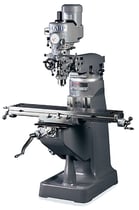
Historically, CNC machines users were looking to add machining configurations to their machines, so they could produce a part in fewer steps. This results in important time savings and in more precise and complex parts. Passing from a 3-axis machine that requires 3-4 setups, to the exact same part done in 2 simple setups using a full 5-axis machine, this leads to a machine that works a lot more than before. The downtime being reduce... the spindle time necessarily increases.
Another way to increase productivity is to add pallet changers (milling) or auto-feeders (turning). These pieces of equipment will feed the spindle with parts without even stopping the machine. For example, if you are using a pallet changer on a CNC milling machine, the moment the part is ''done'', the turntable will switch to the next raw part and continue its machining operation. The operator can then dismount the finished part from the vice without being rushed by the production rate. This device has increased productivity significantly, same principle applies for the auto-feeder A.K.A bar feeder.
Notice that machine performance has increase over time and that CNC's are WAY faster than they use to be.

Robots in Machine Shops
However, there are still applications that require manual loading operations. Either you are using a machine that cannot accommodate a bar feeder or an older turning machine. In these cases, what are your options to adapt your work cell to the reality of the 21st century? Well, the answer is quite simple, Robots.
With fewer qualified workers coming out of school or perhaps being interested by machining, it is hard to find personnel with the required skills to feed a CNC machine properly. Using a robot can be your simplest option. In fact it might be liberating a redundant task, so you can keep your employees doing the interesting jobs. This means that while the robot is feeding the machine, the human worker can ''add value'' to your application process. In fact, s/he can prepare setups for future productions, do some quality assurance to make sure the parts meet your customers’ standards, and do some maintenance to ensure the machine is running fine throughout the whole production run. By liberating the worker from redundant tasks, it gives him the opportunity to do different stuff that will accelerate the transition from one project to another.
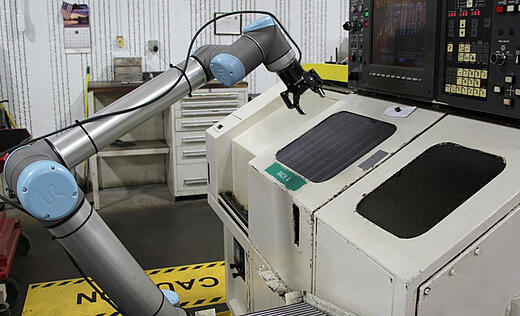
Today these robots have embedded safety sensors that detect impact and are designed not to harm human workers. In fact, with robots like Universal Robots (UR5 & UR10) feeding a machine is now simple. Without the need for safety guarding, the robot can be integrated into your work cell right away. The robots are dependable, they can run around the clock and still place the part in the exact same spot. Collaborative robots such as Universal Robots are designed to be reprogrammed on the fly by hand-guiding.
So if we recapitulate; introducing a robot reduces the time between jobs, increases the product quality (due to quality assurance) and runs around the clock! All of this means you increase your spindle time... clever isn't it?
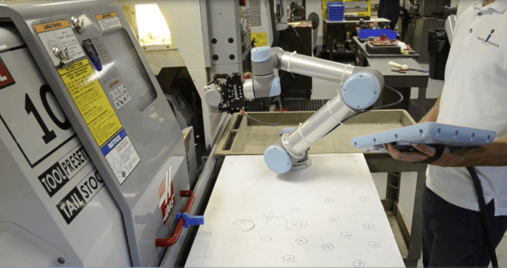
But, yeah, I know what you’re thinking: 'These robots are expensive and don’t fit every production type.' Well, you’re wrong there. Most collaborative robots are less expensive than a year of salary for a normal machinist. They are also easy to program and can be fitted with tools such as Adaptive Grippers that can manipulate a wide range of parts. Even parts with strange geometries, unusual surface finishes or part fragility, everything is possible. By using hand-guided programming, you can switch the robot from one machine to another and accelerate your ROI on your robot cell.
What do you think? Need a real life example, well take a look at the following case study and see the benefit of introducing this type of cell into your workshop. But to get deeper into robotic machine tending integration, we have launched the new Machine Tending Solution that should be helpful in integrating a robot in your machine shop.





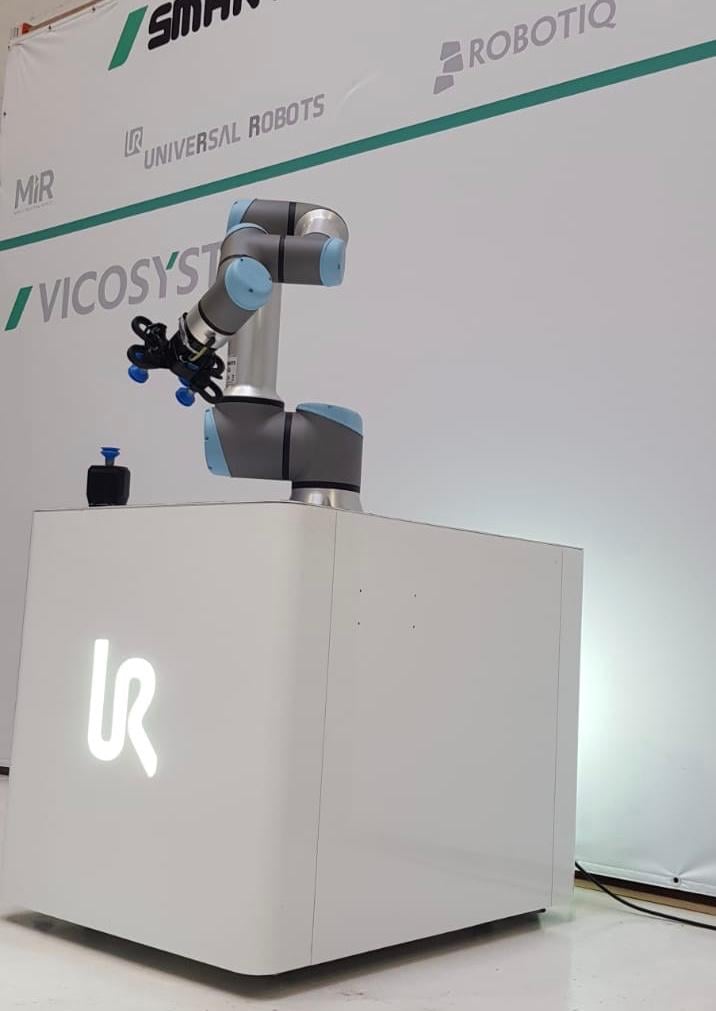

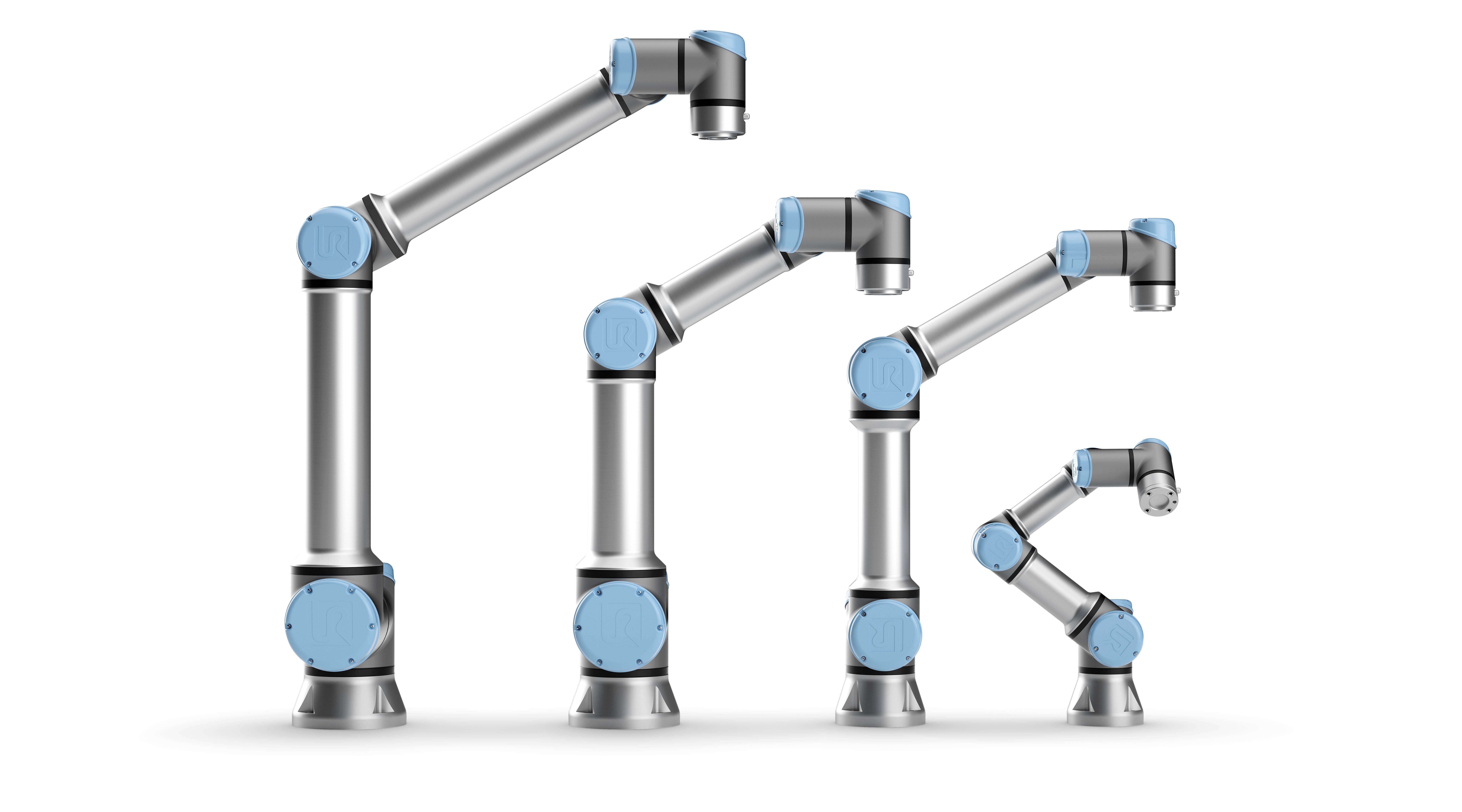


Leave a comment